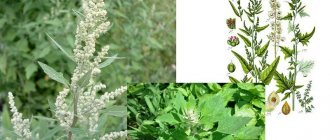“A wolf in sheep’s clothing” - this is how one can characterize this incredibly beautiful when flowering, but treacherous plant. It can easily kill a person, but it is expected to help treat cancer. This article tells how to recognize wolf's bast among other shrubs, why it is called that, how and where it can be used, and what to do if it is poisoned by its scarlet berries.
Wolf's bast - appearance of berries
What does a wolf's bast look like?
If you meet the common wolfberry at the end of April, it may seem that by some miracle sakura has bloomed in a European forest. There are no leaves yet, but fragrant pink flowers have already clung to the branches in anticipation of the bees. But, unlike the five-petalled Japanese cherry, wolfberry flowers have only four petals arranged in a cross.
Wolf's bast is a low, up to 1.5 m, shrub with a branched root system and gray wrinkled bark. Its narrow leaves are located mostly at the tops of the shoots and resemble laurel leaves. On top they are colored rich green, and below they take on a bluish tint. The barrel-shaped red berries are botanically correctly called drupes because they contain only one seed.
Wolfberry is the first to bloom in central Russia and looks very elegant, but don’t let this fool anyone: the plant is deadly poisonous.
Wolfberry blossom
All the popular names of the shrub: “wolf fang”, “wolf pepper”, “wolf ivy”, “wolfweed” do not at all indicate that the gray predator is treated with its bark or fruits. Only certain species of forest birds can consume wolf bast berries without harm. It’s just that folklore associates everything evil, dangerous, and deadly with the wolf.
If all the wolf epithets with which the plant is awarded indicate the presence of poisons, then the word “bast” is associated with the fact that the strong bast of the bush was used for weaving small items. In addition, folk healers also used the inner layer of bark - bast, that is, exactly what the people call “bast”.
The great Swedish taxonomist Carl Linnaeus gave the wolfweed the name Daphne mezereum in honor of the beautiful nymph Daphne. Suffering from the persecution of her lover Apollo, Daphne begged her father to turn her into a tree that cannot even be touched. Indeed, any parts of the plant, but especially the fruits, accumulate burning, poisonous juice.
How to draw an evil wolf for a child step by step
Well, bunnies and hedgehogs, have you relaxed from the good life? Are we cracking carrots and not doing exercises? It’s okay, uncle wolf will come right now and clearly explain what the struggle for survival is and what forest orderlies do. Today we’ll draw a wolf!
- Step 1
Draw an open drop like this - this will be the outline of the muzzle: - Step 2
About a third from the bottom, draw the nose (note - flattened, but now vertical!) and draw a line from it to the bottom edge (our muzzle is slightly tilted, so the line should not be completely straight, but slightly in an arc): - Step 3
Teeth! Two fangs stick out, the rest are in ambush: - Step 4
Mustache. Our wolf is a serious man, he has no time to fuss with his whiskers, so they are not as long as a cat’s: - Step 5
Eyes: this time, unlike all the previous ones, they are not in the form of dashes. Draw two ovals with pupils (dots or dashes): - Step 6
And the wolf's ears grow right out of his eyes. From the point of view of anatomy, it is impossible to explain this fact, of course, and God bless him. Ears are about the same size as eyes: - Step 7
Look, the face is ready, but our wolf is never evil. On the contrary, he looks like a confused donkey that has grown fangs and doesn’t know what to do with them. Eyebrows will help us anger the wolf. Take it and draw a squiggle right over the eyes - something between a V and a U. Come on, come on, draw bolder: - Step 8
I think everyone has met bosses who look like our wolf: angry and with black shaggy eyebrows, and even with a mustache a la a forty-five-caliber toothbrush. “Comrade General, you have a grandson who looks exactly like you: small, bald, doesn’t understand anything and yells all the time.” So, let’s go back to the wolf! draw the body... - Step 9
...and hands. Don't forget long claws! - Step 10
The result is an evil tumbler. Let's draw his legs - the same as his arms: - Step 11
- Step 12
And the spindle tail: - Step 13
Let's mark the tip of the tail with a zigzag... ...and the angry and scary gray wolf is ready! In conclusion, two little tips: - the nose looks more lively if you don’t paint it entirely, but leave a small white line or dot - it looks like a highlight - don’t spare your paws! I mean, draw the wolf's paws quite large. He'll need it. Well that's all for today. By the way, have you forgotten that we decided to complement the drawings? So put something on the wolf or give it something to its paws. How about drawing a wolf and three little pigs?
In conclusion, two little tips: - the nose looks more lively if you don’t paint it entirely, but leave a small white line or dot - it looks like a highlight - don’t spare your paws! I mean, draw the wolf's paws quite large. He'll need it. Well that's all for today. By the way, have you forgotten that we decided to complement the drawings? So put something on the wolf or give it something to its paws. How about drawing a wolf and three little pigs?
The wolf is a dangerous predator, including for humans. But he also has a number of outstanding features for which people fell in love with the wolf. His courage and loyalty are legendary. Therefore, the image of a wolf is often used in films, cartoons and books. You can also see paintings, posters and even tattoos with various images of a wolf. Today we will devote our lesson to the question “ how to draw a wolf with a pencil?”
, the lesson will be very detailed and step-by-step, so that even children can draw a wolf easily and simply.
Distribution and habitats
Deadly wolfberry is distributed throughout Europe, but clearly gravitates to the northern regions. The Kola Peninsula, Taimyr, Yamal - winters well everywhere. In the east it reaches the Irkutsk region, then - as an alien plant in single copies. In the south it is found all the way to the foothills of the Caucasus, but already in Moldova or Kazakhstan it is listed in the Red Book.
The ecological preferences of the wolfberry are the undergrowth of mixed and larch forests. It grows well in shade surrounded by forest herbaceous plants.
Application
According to the Botanical-Pharmacognostic Handbook, the use of wolf bast in official medicine is prohibited. However, it is included in the list of medicinal plants and is used in folk medicine. It is mainly used externally for:
- irritation of the skin and blood flow to it during colds;
- accelerating the maturation of abscesses and boils;
- warming joints for arthritis.
In Rus', young girls rubbed the juice of wolfberries on their cheeks, since beetroot “blush” openly betrays its origin.
Wolfberry has been used in homeopathy since 1805, when homeopathic physician Samuel Hahnemann introduced wolfberry bark preparations called “Mesereum” into the formulation (can also be found under the name “plant mercury”). Hahnemann was well aware of the danger of wolfworm and recommended fairly high dilutions for:
- very painful neuralgia of the dental and trigeminal nerves;
- postoperative neuralgia;
- trophic ulcers associated with varicose veins;
- chronic otitis and stomatitis;
- herpes zoster;
- conjunctivitis;
- caries.
In homeopathic practice, the effect of the drug is explained by the fact that wolfberry drives away “black bile and mucus.”
Wolfberry is used in folk medicine
The benefits of wolf bast
The second reason why this useful plant should not be touched is that wolfberry has become too rare in our forests. Here, perhaps, someone will be surprised: just now the author was frightening with the toxicity of the bush, and suddenly - a “useful plant”!
In fact, there are no useless plants in nature. And the benefits that the wolf's bast brings to people are undeniable. This is an early, and therefore very important, honey plant. By the way, this plant does not cause any harm to bees or honey. And the medicinal properties of wolfberry are also great and in many ways have not yet been studied.
In folk medicine, an alcoholic tincture of its bark and berries has long been used as an external remedy for rheumatism and gout. Ointment made from fruits and leaves treats abscesses.
Modern pharmacology is also very interested in wolfberry. If only because it has been found that the glycoside daphnin, contained in all parts of the plant, inhibits blood clotting. And this is the path to treating many dangerous diseases, for example, preventing the formation of blood clots.
Homeopathy uses wolfberry to treat a number of diseases.
Medicinal properties and harm
The active substances of wolf's bast strongly irritate the mucous membranes of the digestive tract. There is information that folk healers used decoctions and infusions of wolfwort as an emetic and laxative.
Meserein and dafnetoxin exhibit such beneficial properties as:
- anticoagulant;
- antibacterial;
- antitumor.
Research in recent years suggests the possibility of obtaining drugs for the treatment of thrombophlebitis from this plant. In the future, it is possible to use the anti-leukemic properties of the plant.
However, treatment with wolf bast is associated with a high risk of poisoning, which occurs as hemorrhagic gastroenteritis.
Planting wolf bast in the garden and caring for it
Dedicated to the nymph Daphne, the shrub is amazingly beautiful and therefore is rarely found in household plots. It is valued for its early flowering and elegance during fruiting. Two garden forms have been developed: one with variegated leaves, the other with purple flowers that bloom in autumn.
When growing wolfweed, several of its features should be taken into account:
- loves light shade, will not bloom in dense shade;
- tolerates frosts well, but droughts poorly;
- categorically does not accept transplants.
Wolfberry takes cuttings well. Last year's shoots are cut off in the spring and rooted in a peat-humus container, which is completely placed in the planting hole. The best place for the plant is under a small-leaved tree or on the north side of a gazebo, pergola, or greenhouse.
In order not to disturb the surface roots in the future, the soil under the wolf grass is regularly mulched with peat or leaf litter - there is no need to loosen it. Once a year you can feed the bush with complex fertilizer. During droughts, sprinkling irrigation is advisable.
It is not recommended to plant wolf's bast in gardens where children are likely to be present. A child may confuse the fruits of the plant with red currants and eat them despite the unpleasant taste.
Wolfberry is occasionally found on personal plots
What is a wolf's bast
Deadly wolfberry is a shade-tolerant, frost-resistant and perennial shrub. It prefers to grow on peat soil, does not tolerate periods of drought and reproduces mainly by seeds. Due to the poisonous wolf berries and bast bark, the plant is not often planted in park areas and garden plots. But in the forest this shrub can be found everywhere. Bast grows in the European part of Russia, Western Siberia and the Caucasus. Although wolfberry is considered a widespread plant, a photograph of bast is listed in the Red Book of the Moscow Region.
Collection, preparation and storage
Fresh bark is used as a medicine for wolfberry. It is harvested before flowering - in early and mid-April. The bark is peeled off from young shoots, the inner layer is separated, cut into strips and dried, spread out in one layer. When working with fresh raw materials, be sure to wear gloves and protect your eyes.
The fruits are harvested when they are fully ripe - at the end of summer. They are dried at room temperature in a very dry room. Store harvested wolf bast in closed bags or glass jars out of the reach of children and with the obligatory label: “Poisonous!”
Wolf's Bast
Few-branched, erect shrub, up to 150 cm high, with yellowish, easily peeled bark.
The leaves of the wolf's bast are alternate, oblong-lanceolate, crowded towards the top of the shoot, dark green. The flowers are medium-sized, dark pink with a strong scent, bloom before new leaves appear. The fruits are bright red oblong-oval berries. Wolf's bast blooms in April-May. The plant is highly poisonous. The smell of flowers causes headaches.
Recipes
Due to the toxicity of the plant, self-medication with wolfwort preparations taken orally is strictly prohibited. It can be used exclusively externally for colds and severe pain.
Using the irritating effect of wolfberry substances, they cause warming of the chest during tracheitis, bronchitis, tonsillitis, and pneumonia. To do this, the dried bark is soaked in water or vinegar and applied instead of mustard plasters. This treatment is contraindicated for children, pregnant women, allergy sufferers and people with heart failure.
To relieve neuralgic pain, an ointment is prepared from wolf bast :
- First, 1 g of bark and fruit are mixed, and 100 ml of 70% alcohol is poured.
- Shaking occasionally, leave for a week.
- Then take 20 ml of this tincture and mix with lanolin and petroleum jelly (50 g each).
- Before going to bed, lubricate the sore spot with the resulting ointment and wrap it with a warm cloth.
- They carefully monitor their well-being. At the slightest deterioration in health, stop using wolfberry.
Powder made from dried and crushed bark is sometimes used to expel ants and cockroaches from the house, provided that there are no small children or pets in the house.
What help to provide in case of wolf bast poisoning
Help for wolf wolf poisoning begins before the arrival of a doctor, who is called immediately. To remove the poison from the body, those who eat wolfberries must immediately rinse their stomach. The victim is given about a liter of warm water, in which either a tablespoon of table salt or several crystals of potassium permanganate are dissolved. When a person has drunk all the water, press on the root of the tongue, thereby inducing vomiting.
If necessary, repeat the procedure. When the vomit consists of pure water, the victim is given Enterosgel sorbent, which will remove substances that have managed to penetrate beyond the stomach. The person is covered with a blanket, calmed down, and the loss of fluid is replenished with warm tea.
Wolf's bast bush
The delicate beauty of pink inflorescences and the elegance of the scarlet fruits of the wolf's bast are deceptive. Behind the attractive appearance lies a dangerous poison. The habitat of the wolfberry is slowly but surely declining, but one can hope that medicine will find a way to use its remarkable properties in the treatment of serious diseases.










